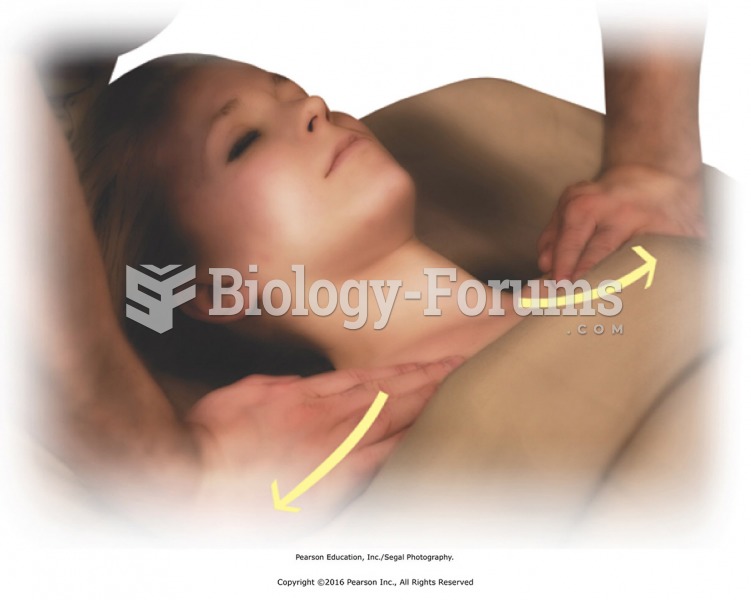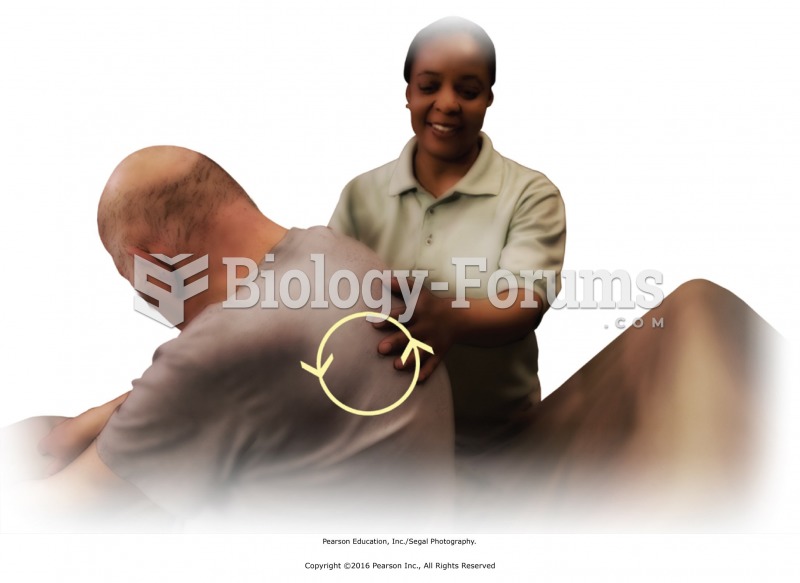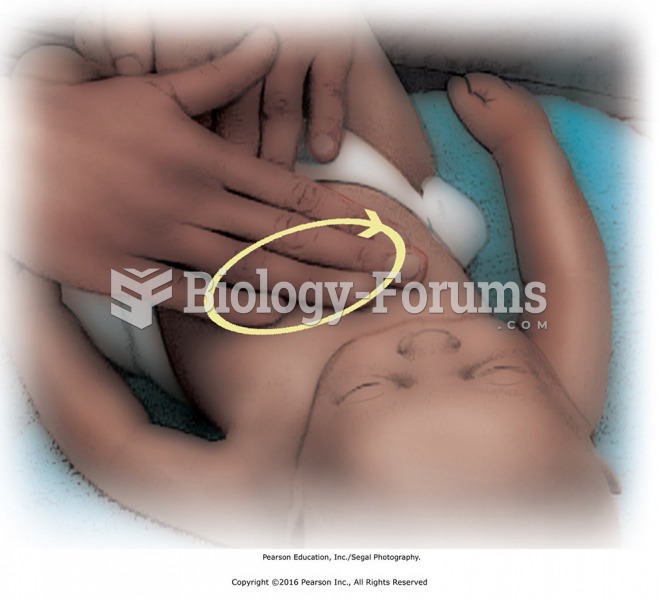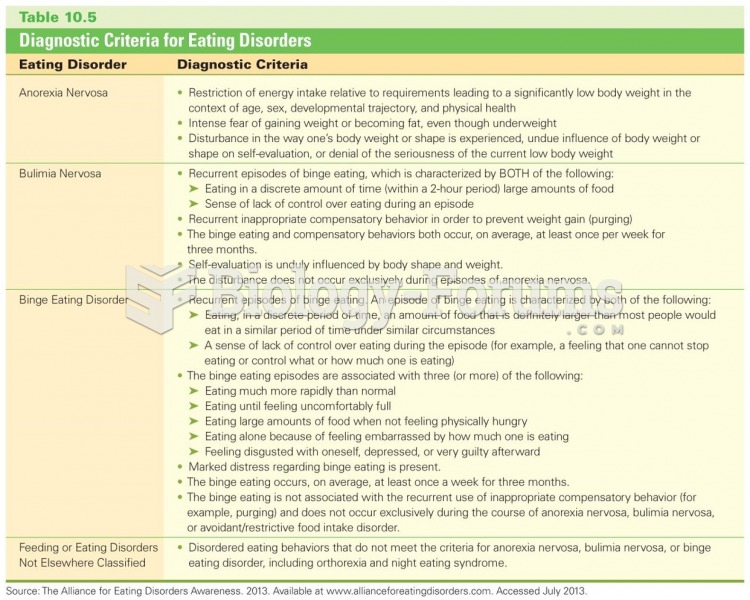|
|
|
The first documented use of surgical anesthesia in the United States was in Connecticut in 1844.
The average human gut is home to perhaps 500 to 1,000 different species of bacteria.
A cataract is a clouding of the eyes' natural lens. As we age, some clouding of the lens may occur. The first sign of a cataract is usually blurry vision. Although glasses and other visual aids may at first help a person with cataracts, surgery may become inevitable. Cataract surgery is very successful in restoring vision, and it is the most frequently performed surgery in the United States.
The heart is located in the center of the chest, with part of it tipped slightly so that it taps against the left side of the chest.
The lipid bilayer is made of phospholipids. They are arranged in a double layer because one of their ends is attracted to water while the other is repelled by water.
 Standing at the head of the table, apply oil or lotion to chest area. Spread lubricant fanning out ...
Standing at the head of the table, apply oil or lotion to chest area. Spread lubricant fanning out ...
 Apply oil or lotion to the entire leg. Include hip if performing massage to hip region as part of ...
Apply oil or lotion to the entire leg. Include hip if performing massage to hip region as part of ...
 Apply superficial friction to the upper and lower back. Stand to one side. Ask the recipient to lean ...
Apply superficial friction to the upper and lower back. Stand to one side. Ask the recipient to lean ...




